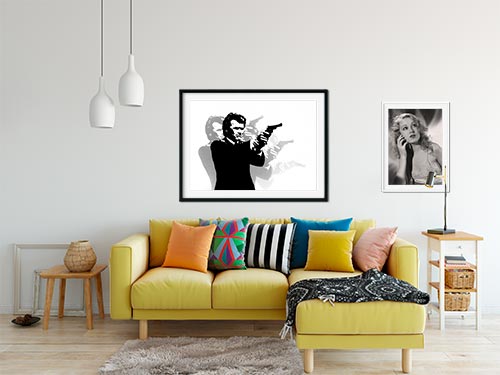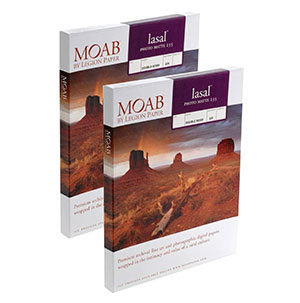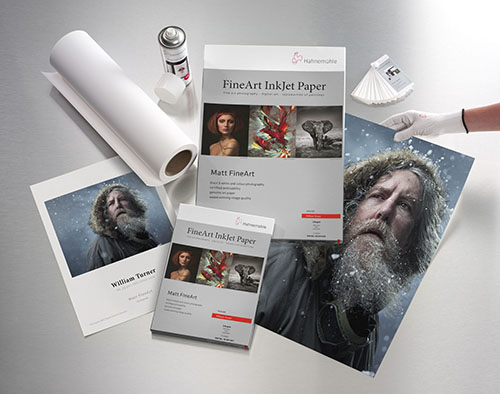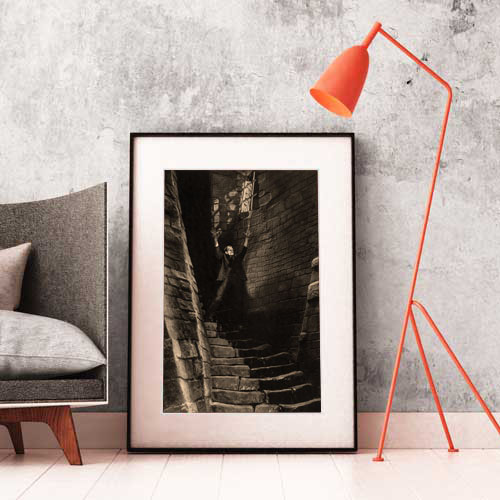Stunning theatrical publicity shot featuring Roman Polanski (Trelkovsky). Much effect is derived from the absurdity of the fact that all Trelkovsky wants to do is not bother anyone, yet everything Trelkovsky does is seen as an imposition!
The Tenant (French: Le locataire) is a 1976 French psychological horror thriller film directed by Roman Polanski. The film stars Polanski, Isabelle Adjani, Melvyn Douglas, and Shelley Winters. It is based upon the 1964 novel Le locataire chimérique by Roland Topor and is the last film in Polanski's "Apartment Trilogy", following Repulsion and Rosemary's Baby. The film was entered into the 1976 Cannes Film Festival and had a total of 534,637 admissions in France.
In his review of the film for The Regrettable Moment of Sincerity, Adam Lippe writes: "Many would attest that The Pianist is Polanski's most personal work, given the obvious Holocaust subject matter, but look beneath the surface, and when the window curtains are drawn aside, Polanski's The Tenant shines brightest as the work closest to his being."
Like the other two films in Polanski's Apartment Trilogy, The Tenant blurs the line between psychological thriller and horror. It garnered critical comparisons to both its contemporaries Don't Look Now (1973) by Nicolas Roeg and Stanley Kubrick's The Shining (1980). Given its production design, photography, and the bizarre scenario of a group of neighbors that appear to be preying on a new tenant's life and conspiring against him for that purpose, it has also been compared to the black comedy film Delicatessen (1991). The narrative seems to suggest a house as the malevolent source to the sinister deeds of its inhabitants, and is set in a post-apocalyptic future where all animals have died and the people of a remote decaying house resort to eating each of the house's successive new janitors.
Kafka influence
Many critics have noted The Tenant's strong Kafkaesque theme, typified by an atmosphere that is absurdly over-burdened with anxiety, confusion, guilt, bleak humor, alienation, sexual frustration and paranoia. However, the film cannot be viewed as purely driven by a Kafkaesque motif because of the numerous references to Trelkovsky's delirium and heavy drinking. This allows for more than one interpretation.
Most of the action occurs within a claustrophobic environment where dark, ominous things occur without reason or explanation to a seemingly shy protagonist, whose perceived failings as a tenant are ruthlessly pursued by what Trelkovsky himself views as an increasingly cabalistic conspiracy. Minor infringements are treated as serious breaches of his tenancy agreement, and this apparent persecution escalates after he refuses to join his neighbors in a prejudiced campaign to oust a mother with a disabled child.
"The scheming plots over matters of extraordinary pettiness and inexplicable conspiracies that go on among the neighbors to gang up on others make The Tenant probably the first Kafkaesque horror film."
Product Enquiry
Kodak Professional Endura Paper
Kodak Endura papers provide an incredible amount of detail and smooth transition of tones. Designed for the professional photographer in mind, looking for a more traditional photo print style, Kodak Endura provides an extended print life and color gamut almost at the level of a high end fine art paper print.
Archival Matte Paper
Archival Matte Paper, also known as Moab Lasal Photo Matte, is our house stock fine art paper and is an economical favorite for fine art reproductions and photo prints. It features a smooth surface, heavy weight (230 g, 9.5-mil), neutral white, matte paper engineered for accurate color reproduction that provides high contrast and high-resolution output. This paper is acid-free, making it the perfect choice for both photography & fine art reproductions.
Giclee William Turner Paper by Hahnemühle
The William Turner by Hahnemühle is one of the most popular papers used in the Giclee printing industry. This is a 310g natural white mould made natural line paper with 100% rag content making it highly archival. It has a slight coarse texture which gives photos and artwork an elegant look. These fine art paper prints (also known as Giclee) are ordered by galleries, individual artists and photographers. The papers and inks are not only archival but use some of the most accurate print technology for full color prints.
- Giclee prints use very expensive archival pigmented inks.
- Highest level of color gamut available in printing (12 color printing).
- Exceptional black & white printing.
- Fade resistant, pigmented inks which provide a superior color range compared to other types of inks. Widely preferred in fine art and photography circles.
- We ONLY use professional grade fine art and photo paper that resist yellowing and aging.



Framing
We offer wood and metal frames, custom cut & joined to order. Each framed print includes hanging hardware and foamcore backer.
Matting
We use conservation grade 100% virgin alpha-cellulose 2 ply mats with white core. Acid-free and lignin-free, these are both face resistant and meet all conservation quality standards set by the Fine Art Trade Guild. Mats are digitally cut for ultimate precision. The window will be 1/8″ smaller than the print dimensions.
Glazing (Acrylic Glass)
We offer custom cut panes of shatter-proof, acrylic glass, to protect your valuable artwork and prints.
Premium Clear
Framing grade clear acrylic is shatter resistant and lightweight.
Reflection Control
With its matte finish, Tru Vue Reflection Control® Acrylic scatters light to diminish unwanted glare.
Conservation Clear
Tru Vue Conservation Clear® Acrylic is a framing industry staple, blocking up to 99% of UV rays for ultimate protection.
Conservation Reflection Control
Tru Vue Conservation Reflection Control® Acrylic scatters and diffuses light to reduce unwanted glare. Blocks up to 99% of UV rays.







